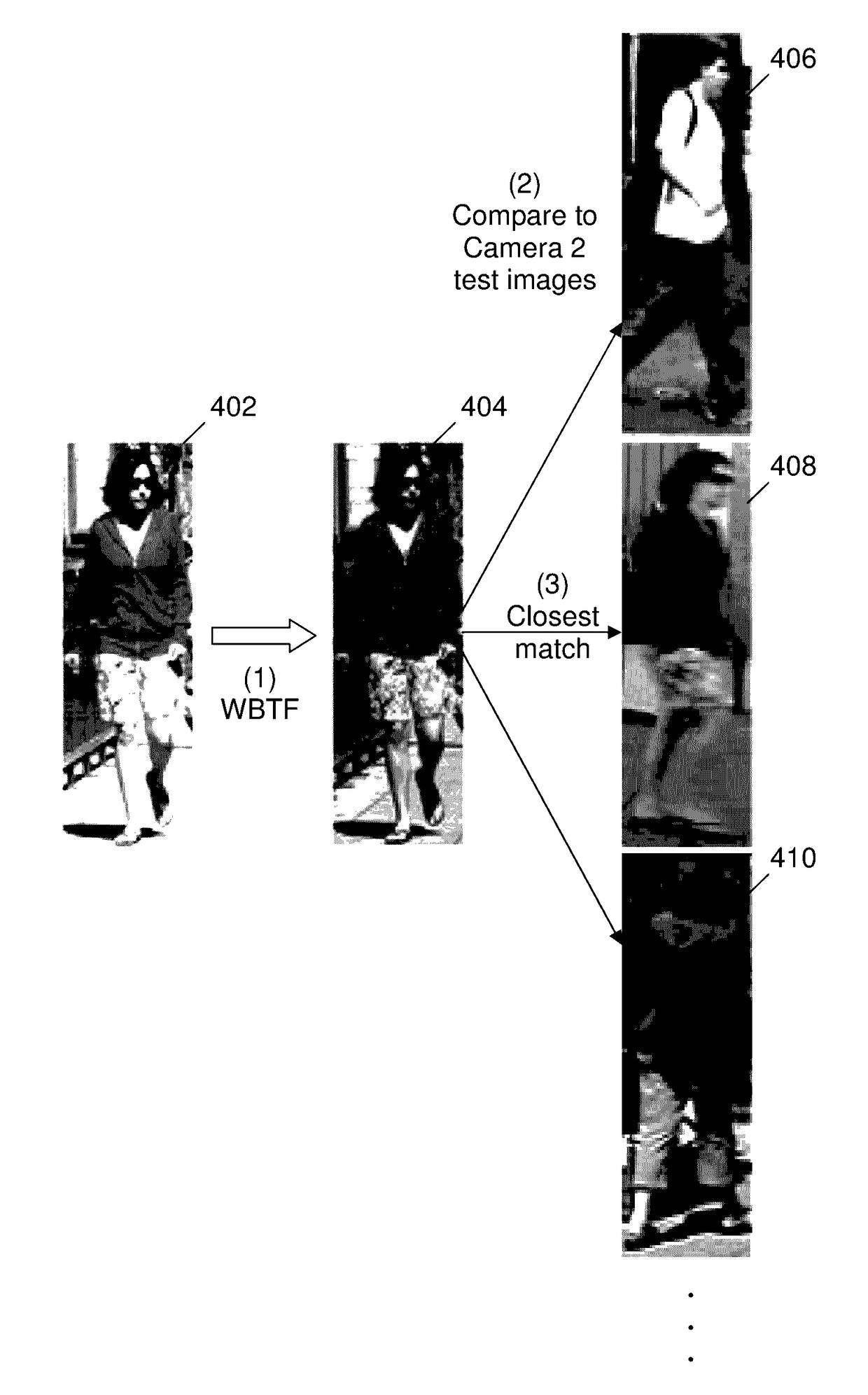Appearance modeling for object re-identification using weighted brightness transfer functions
a technology of appearance modeling and object re-identification, applied in the field of image processing, can solve problems such as difficult re-identification of objects, and achieve the effect of accurate transfer of appearance information
- Summary
- Abstract
- Description
- Claims
- Application Information
AI Technical Summary
Benefits of technology
Problems solved by technology
Method used
Image
Examples
examples
[0066]FIG. 3 depicts exemplary pairs of images used in a training stage of the program of FIGS. 2A-2B, in accordance with embodiments of the present invention. M training image pairs 302-1, 302-2, . . . , 302-M are examples of the training image pairs received in step 202 (see FIG. 2A). The M training image pairs include M training images 304 captured by a first camera and M training images 306 captured by a second camera. As shown in the training image pairs 302-1, 302-2, . . . , 302-M, the people in training images 304 appear brighter than the people in training images 306. As one example, a BTF determined in step 204 (see FIG. 2A) and corresponding to training image pair 302-1 maps the more bright image captured by the first camera (i.e., the left image in the training image pair 302-1) to the less bright image captured by the second camera (i.e., the right image in the training image pair 302-1).
[0067]FIG. 4 depicts an example of images used in a testing stage of the program of ...
PUM
 Login to View More
Login to View More Abstract
Description
Claims
Application Information
 Login to View More
Login to View More - R&D
- Intellectual Property
- Life Sciences
- Materials
- Tech Scout
- Unparalleled Data Quality
- Higher Quality Content
- 60% Fewer Hallucinations
Browse by: Latest US Patents, China's latest patents, Technical Efficacy Thesaurus, Application Domain, Technology Topic, Popular Technical Reports.
© 2025 PatSnap. All rights reserved.Legal|Privacy policy|Modern Slavery Act Transparency Statement|Sitemap|About US| Contact US: help@patsnap.com



